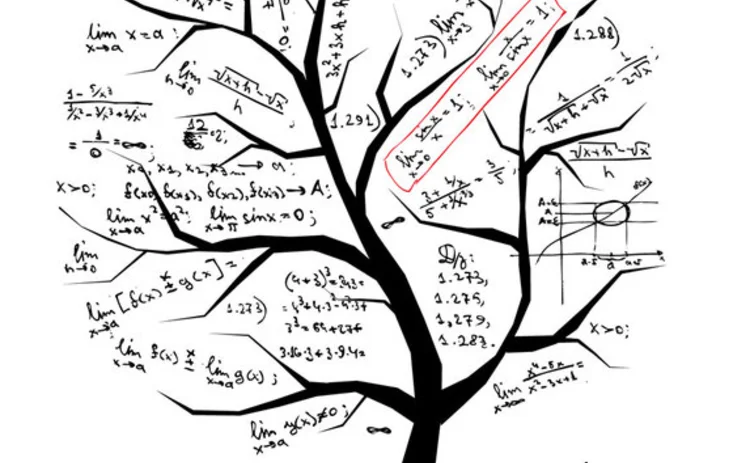
Cutting Edge introduction: Sticky SABR
Negative interest rates are tricky to model accurately, but quants at Numerix have developed a technique to better capture their dynamics, without the hassle involved in using shifted models

Savers, investors and traders have been coping with negative interest rates since 2012 in some markets, and the headaches they create have only spread since. As of September 4, the Swiss franc overnight Libor rate has been -0.78% and the German Bund two-year yield at -0.235%. Even the European Central Bank cut its deposit facility rate to -0.1% in June 2014, only to push it further three months later, to -0.2%.
Initially, the concept of a negative interest rate seems counterintuitive, posing a threat to the elegance of standard financial models by requiring crude modifications to commonly used rate frameworks – some quants, however, are determined not to allow it.
In this month's first technical, The free boundary SABR: natural extension to negative rates, three staffers at technology vendor Numerix attempt to tackle negative rates by proposing an extension to a popular benchmark interest rate options model, called stochastic alpha beta rho (SABR) – they claim it is the first such approach to capture a very important sticky behaviour of rates around zero. The authors are Alexandre Antonov, a senior vice-president, Michael Konikov, an executive director and head of quantitative development, and Michael Spector, a director in the quantitative research team at Numerix.
Standard models cannot usually capture negative rates – a feature once treasured in the field. The most common and crude way of overcoming this is to use a shifted-rate process for some positive-enough value of shift to prevent the process ever becoming negative.
"This approach has the obvious drawback of having to choose the shift, which suggests we need to know in advance how low rates can go in the future. If we guess it wrong, our assumption has to reflect the new market conditions, which will lead to jumps in all the model parameters, and consequently in all the present values and risk values," says Numerix's Antonov.
Solution in boundary conditions
The solution, according to the quants, lies in the way the boundary conditions of the SABR model are specified.
Historically, observations of rates show they tend to be sticky around zero – that is, once they hit that threshold they tend to stay there for some time. Existing models do not capture this, say the quants, who introduce two boundary conditions to address the omission: when rates are positive, an absorbing boundary condition at zero to ensure the positivity of rates; and a free boundary condition to allow rates to go negative when they dip below zero. The latter allows the rate to go to a negative value of any size – something impossible in shifted models. The authors derive analytical solutions for both a zero-correlation case and a non-zero one, both with a good fit to Monte Carlo-simulated values.
Some believe tweaking existing models, instead of shifting or completely changing them, has clear advantages in terms of modelling the dynamics.
"The standard approach has been to create a separate model to see what happens to negative interest rates. What the authors did is reuse the same model for positive rates to see what happens as rates become negative – we actually have no evidence for things being different for negative rates," says one senior quant at a US-based consulting firm.
Numerix is currently incorporating the new SABR model into its interest rate volatility cubes.
In our second technical, Wrong-way risk done right, Jacky Lee, global head of quantitative strategies for global credit products at Credit Suisse, and Luca Capriotti, the team's head for Europe, the Middle East and Africa, propose an arbitrage-free valuation framework for modelling the counterparty exposure of credit derivatives portfolios and, in turn, the wrong-way risk of the portfolios.
Wrong-way risk is the risk that an exposure to a counterparty is adversely correlated with its credit quality. In order to capture the risk, one would need to model correlated credit spreads of reference entities and correlated default times, making the process extremely demanding.
The authors use the properties of the Clayton copula, a type of dependency model, to develop a framework that can be implemented a lot quicker than the cumbersome nested Monte Carlo simulations, which are typically required to model the exposures of credit portfolios. The resulting computation time is a major step up in performance from existing methods, and it is comparable to those of simple products such as interest rate swaps and vanilla options.
Only users who have a paid subscription or are part of a corporate subscription are able to print or copy content.
To access these options, along with all other subscription benefits, please contact info@risk.net or view our subscription options here: http://subscriptions.risk.net/subscribe
You are currently unable to print this content. Please contact info@risk.net to find out more.
You are currently unable to copy this content. Please contact info@risk.net to find out more.
Copyright Infopro Digital Limited. All rights reserved.
You may share this content using our article tools. Printing this content is for the sole use of the Authorised User (named subscriber), as outlined in our terms and conditions - https://www.infopro-insight.com/terms-conditions/insight-subscriptions/
If you would like to purchase additional rights please email info@risk.net
Copyright Infopro Digital Limited. All rights reserved.
You may share this content using our article tools. Copying this content is for the sole use of the Authorised User (named subscriber), as outlined in our terms and conditions - https://www.infopro-insight.com/terms-conditions/insight-subscriptions/
If you would like to purchase additional rights please email info@risk.net
More on Interest rate markets
SABR convexity adjustment for an arithmetic average RFR swap
A model-independent convexity adjustment for interest rate swaps is introduced
NatWest Securities US Treasury trading head departs
Jason Sable joined the UK bank in January 2022 from BNP Paribas
CME in talks to clear term SOFR basis swaps
US clearing house has held discussions with some dealers about clearing term SOFR-SOFR packages
Risky caplet pricing with backward-looking rates
The Hull-White model for short rates is extended to include compounded rates and credit risk
The curious case of backward short rates
A discretisation approach for both backward- and forward-looking interest rate derivatives is proposed
Cross-currency swaps will use RFRs on both legs, says JP exec
Despite slow start, all-RFR swaps will become the market standard within a year, according to Tom Prickett
June mid-month auctions – Coupon and yield trends
As Treasury issuance amounts set new records, coupons at the front end of the curve have marched downward, while back-end coupons have lagged. Yield spreads across each popular measure show a consistent steepening of the curve through the first half of…







